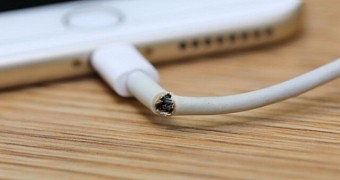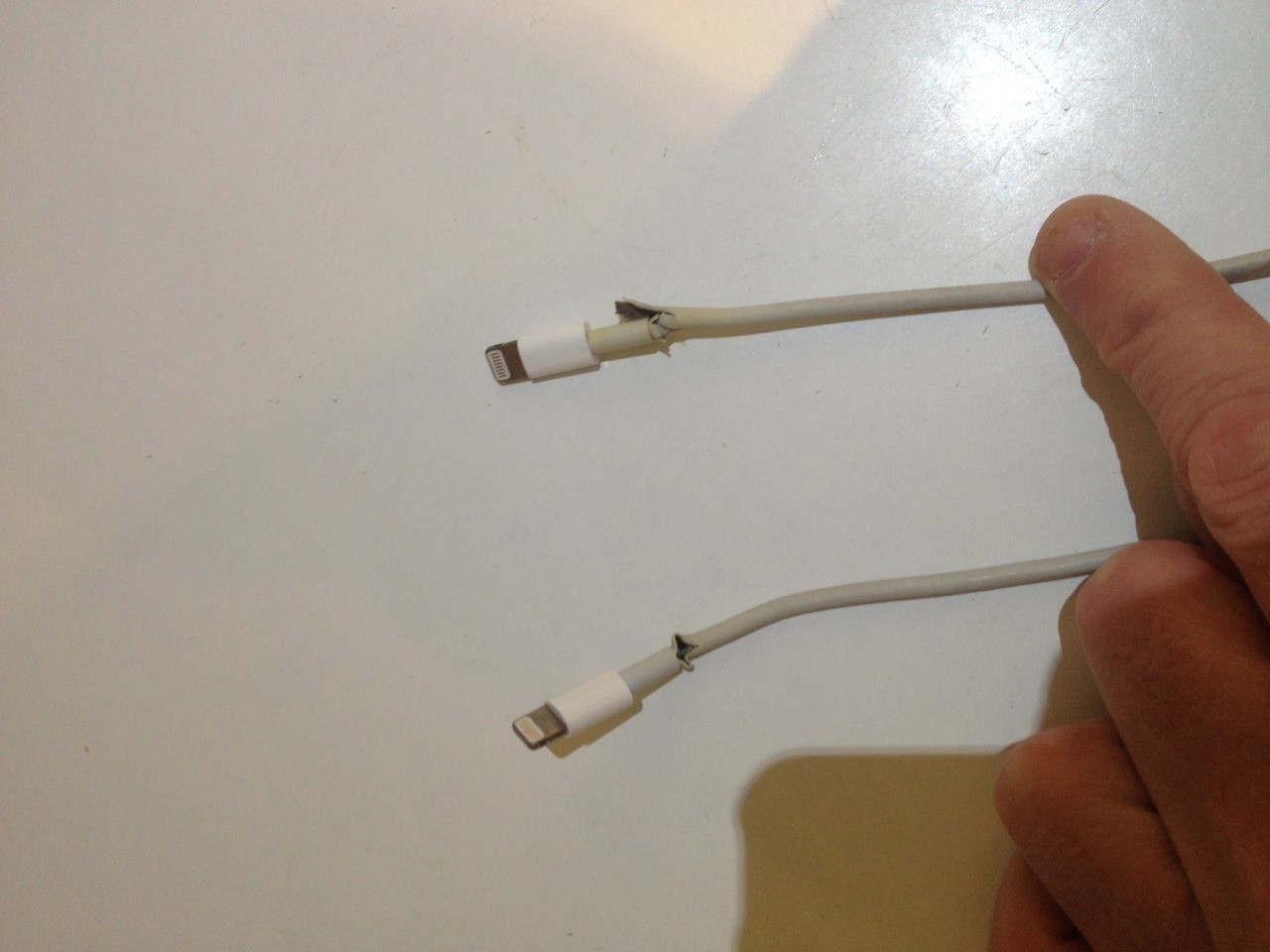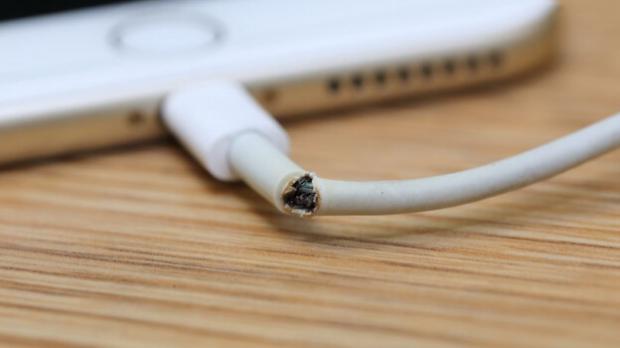Long-time iPhone owners probably know how difficult it is to keep a charging cable in mint condition.
And while things have improved substantially these days, as new-generation iPhones come with cables that can resist the typical usage, there still are many people out there who know how frustrating the whole thing can become, especially when in need of a quick charge.
Basically, what I learned over the years is that the cables that ship with Apple products are extremely prone to physical damage, regardless of whether we’re talking about the iPhone Lightning cord or the little Lightning to headphone adapter.
But as far as the iPhone charging cable is concerned, a quick search on Google shows just how many people are forced to deal with the same issue.
Preventing cables from fraying and breaking is nearly impossible, and sooner or later, there’s a good chance that your iPhone charger cord ends up looking just like this:
Technically, the whole thing happens because of the excessive bending that occurs in the thicker part below the connector, which is also the area that iPhone owners touch the most when plugging in the device or removing the cable.
There are some extreme ways to prevent this in the long term, like wrapping the cable in electrical tape before the actual damage happens, but needless to say, this looks ugly and sometimes comes off leaving the cable all sticky and dirty.
As many other iPhone owners, I got sick of buying iPhone charging cables every once in a while, not only because they are pretty expensive at $19.00 for the 1-meter version, but because I think that Apple should once and for all address this problem and actually build cables that can survive for a longer period of time without any damage.
There are several pretty good options out there, as some third-party manufacturers have built thicker cables that are fully compatible with the iPhone, but at the same time, there’s also the more affordable way to go and which comes down to cheap, unbranded cables from China.
As one of my colleagues said, “it’s a much better deal to buy 10 such cables at $1 each than to spend money on Apple’s version” because at least technically, even if they break down, you can replace them at an insignificant cost.
And yet, here’s how such a cheap iPhone cable looks like after plugging it for the very first time in my phone, trying to recharge it:
In just a few words, here’s what happened. Cable plugged in to the charger for the first time, charger plugged in, Lightning port plugged in, iPhone not charging. Trying to remove the cable from the phone without any excessive power and boom, all the internals exposed and the cable smelling like overheating plastic.
Needless to say, such a cable itself is a fire hazard and it should by no means be repaired and connected to electric power. It can also completely break down your iPhone and even lead to electrocution.
A simple search on sites like eBay shows that there are millions of such cables available for purchase and they sometimes cost even less than $1. To be honest, many of my iPhone cables ended up broken down, but not even one suffered from such damage on first use.
Unfortunately, I’ve seen many people using such cables just because they are more affordable, and at some level, it’s only up to Apple to bring this to an end. Spending $19 on a cable that can eventually get frayed too is something that many iPhone owners aren’t willing to do, regardless of the risks involved when looking for alternatives.

 14 DAY TRIAL //
14 DAY TRIAL // 



